- About MAA
- Membership
- MAA Publications
- Periodicals
- Blogs
- MAA Book Series
- MAA Press (an imprint of the AMS)
- MAA Notes
- MAA Reviews
- Mathematical Communication
- Information for Libraries
- Author Resources
- Advertise with MAA
- Meetings
- Competitions
- Programs
- Communities
- MAA Sections
- SIGMAA
- MAA Connect
- Students
- MAA Awards
- Awards Booklets
- Writing Awards
- Teaching Awards
- Service Awards
- Research Awards
- Lecture Awards
- Putnam Competition Individual and Team Winners
- D. E. Shaw Group AMC 8 Awards & Certificates
- Maryam Mirzakhani AMC 10 A Awards & Certificates
- Two Sigma AMC 10 B Awards & Certificates
- Jane Street AMC 12 A Awards & Certificates
- Akamai AMC 12 B Awards & Certificates
- High School Teachers
- News
You are here
Who's That Mathematician? Paul R. Halmos Collection - Page 48
For more information about Paul R. Halmos (1916-2006) and about the Paul R. Halmos Photograph Collection, please see the introduction to this article on page 1. A new page featuring six photographs will be posted at the start of each week during 2012.
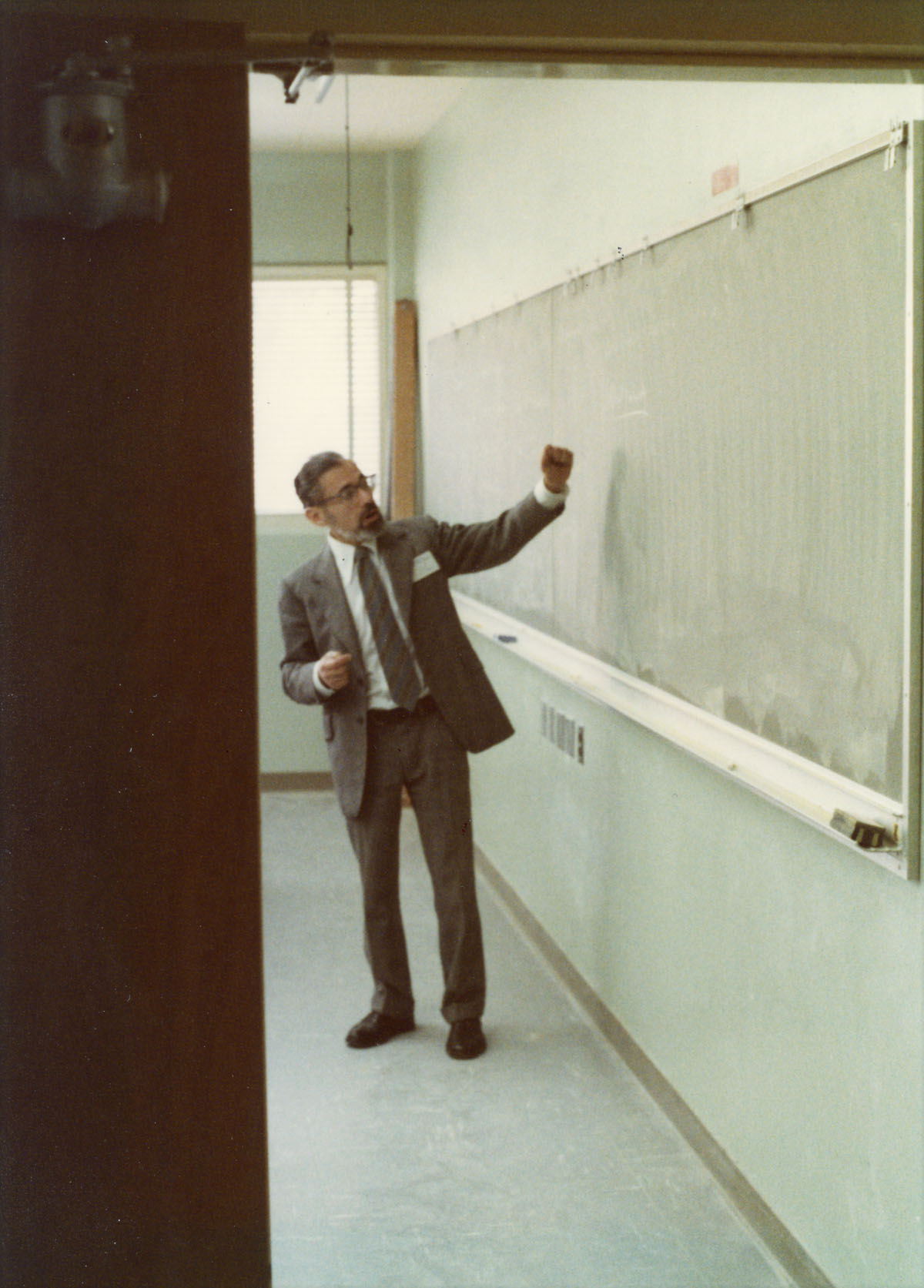
Halmos photographed Irving Segal (1918-1998) in 1977. In this photo, Segal may have been teaching at the Massachusetts Institute of Technology (MIT) in Cambridge, where he was Professor of Mathematics from 1960 onward, but his nametag makes it seem more likely he was lecturing at a conference. Segal earned his Ph.D. in 1940 from Yale University with the dissertation, “Ring Properties of Certain Classes of Functions,” written under advisor Carl Einar Hille (see page 23 of this collection for a photograph of Hille). He would not publish the main results of his thesis until 1947 in the paper, “The group algebra of a locally compact group.” The reason for his delay in publication may have been that, after one year at Harvard (1940-41), he performed war work at Princeton (1941-43) and the Aberdeen (Maryland) Proving Ground (1943-45). He then spent two years at the Institute for Advanced Study in Princeton (1945-47) and another year at Princeton before joining the University of Chicago faculty in 1948. Halmos was on the faculty at Chicago from 1946 to 1961, just a few years longer than Segal (1948-60), and Halmos, Segal, and Irving Kaplansky (from 1945 onward; see page 26 for a photo) were somewhat famously junior faculty members there during the late 1940s and 1950s, hired by department chair Marshall Stone (see page 4 or page 38 for a photo of Stone). Segal advised 40 Ph.D. students, 15 at the University of Chicago and the rest at MIT. His Chicago students included Isadore Singer (1950), Edward Nelson (1955; see page 15 for a photo from that time), and Leonard Gross (1958; see page 19), whose photographs appear in this collection. In their article on Segal in the MacTutor Archive, O’Connor and Robertson quoted Gross on Segal’s main motivation for his mathematical work:
In retrospect I realize that he was driven ... by his single-minded determination to solve one of the big problems of mathematical physics: the existence of interacting quantum fields. Although much of his work may seem to many mathematicians to be motivated simply by the usual aesthetic considerations – and is certainly justified by the intrinsic beauty of his ideas – Irving told me a few years ago that all of his work was aimed in one way or another at understanding quantum physics.
(Sources: MacTutor Archive, Mathematics Genealogy Project, IAS)
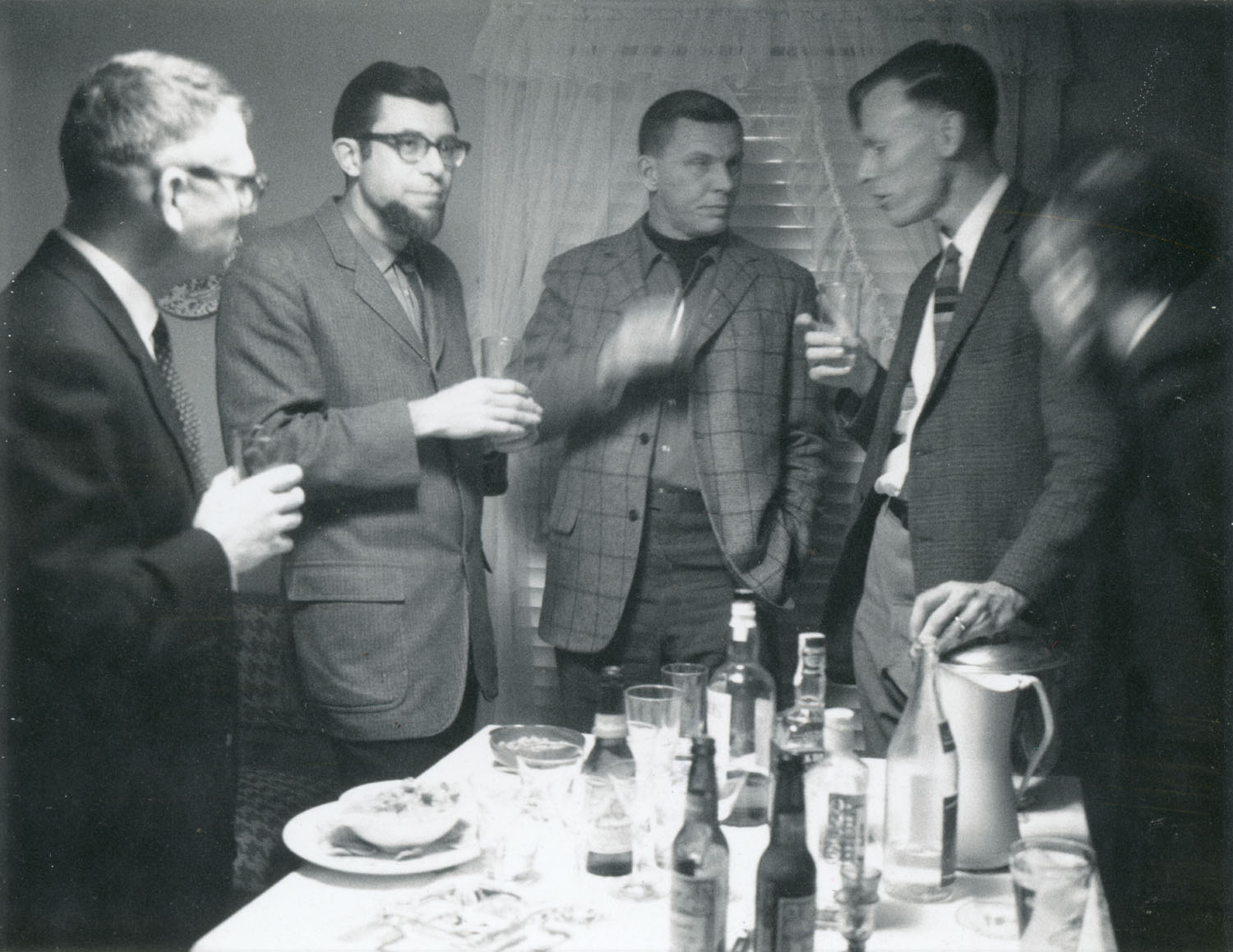
Halmos photographed, left to right, Charles Brumfiel, Harold Shapiro, H. Arlen Brown, and Allen Shields on January 27, 1966, in Ann Arbor, Michigan. These four mathematicians and Halmos were on the faculty at the University of Michigan at the time. Who was the fifth person in the photograph, the one at far right who moved his head as the photo was being snapped, blurring its image? Either Halmos didn’t recognize him later (he listed only four last names on the back of the photo), or it could have been Halmos himself (although he usually scribbled “PRH” in this case).
Charles Brumfiel (1914-1991) earned his Ph.D. from Purdue University in 1954 with the dissertation “Noetherian Minimal Bases and Equations with Prescribed Groups.” He taught public school from 1939 to 1942 and, after earning a masters degree from the University of Chicago in 1944 and working briefly as an industrial engineer, he became an assistant professor at his alma mater, Ball State Teachers College, in 1946. In 1960, Brumfiel moved from Ball State to the University of Michigan, where, during his first two years (1960-62), he published (with Merrill Shanks of Purdue) three “new math” textbooks that not only launched the curriculum known as the “Ball State Program,” but also established Brumfiel as a national leader in mathematics education. He wrote 20 more books and became Professor Emeritus of Mathematics at UM in 1985. According to his UM Memorial,
Despite being a phenomenal mental calculator himself, Brumfiel consistently maintained, in his teaching and writing, the preeminence of reasoning and concept formation over mechanical skills.
(Sources: Mathematics Genealogy Project, University of Michigan Faculty History Project)
Harold S. Shapiro earned his Ph.D. in complex analysis from MIT in 1952 with the dissertation, “Extremal Problems for Polynomials and Power Series,” written under advisor Norman Levinson. Shapiro wrote in 2005 that his Ph.D. thesis could be viewed as a “pioneering effort in the area … of Banach spaces of analytic functions.” He worked at Bell Labs in Murray Hill, New Jersey, from 1952 to 1954, and then was a faculty member at New York University from 1954 to 1962, at the University of Michigan from 1962 to 1972, and at the Royal Institute of Technology (Kungliga Tekniska Högskolan or KTH) in Stockholm, Sweden, from 1972 onward. NYU’s Institute of Mathematical Sciences was renamed the Courant Institute at about the time Shapiro left it; he must have retained an association with NYU because the Mathematics Genealogy Project shows him advising a Ph.D. student who graduated from NYU in 1980. Shapiro became Professor Emeritus at KTH in 1993. In 2005, he listed his mathematical interests as approximation theory, complex analysis, functional analysis, partial differential equations, applications of analysis, and the pedagogy of problem-solving. (Sources: Mathematics Genealogy Project, Swedish Royal Institute of Technology (2005))
H. Arlen Brown was a Ph.D. student of Halmos and of Irving Kaplansky at the University of Chicago, earning his degree in 1952, and a faculty member at Michigan from 1963 to 1967. Brown appears in another photo on page 8 of this collection, where you can read more about him. See page 26 for a photo of Kaplansky.
Allen Shields (1927-1989) earned his Ph.D. from MIT in 1952 with the dissertation, “On Additive Properties of Real Numbers,” written under advisor Witold Hurewicz. His first academic post was at Tulane University, where he wrote papers on topological semigroups. Shields joined the faculty at the University of Michigan in January of 1956, and spent the rest of his career there. His colleague Peter Duren (see page 13 of this collection for a photograph) wrote in his UM Memorial of Shields:
He was especially well known for his work combining functional analysis with problems of classical analysis, often in elegant and unexpected ways. A gregarious mathematician, he published 65 of his 80 research papers in collaboration with a total of 44 different coauthors.
In his book, I Want to Be a Mathematician: An Automathography (Springer 1985), Halmos praised Shields as a seminar partner:
The best kind of seminar has two members. ... The best seminar I ever belonged to consisted of Allen Shields and me. We met one afternoon a week, for about two hours. We did not prepare for our meetings, and we certainly did not lecture at each other. We were interested in similar things, we got along well, and each of us liked to explain his thoughts and found the other a sympathetic and intelligent listener. ... [W]e would shout excitedly, or stare together at the blackboard in bewildered silence – and, whatever we did, we both learned a lot from each other during the year the seminar lasted (pages 72-73).
(Sources: MacTutor Archive; Mathematics Genealogy Project; UM Faculty History Project Memorial)
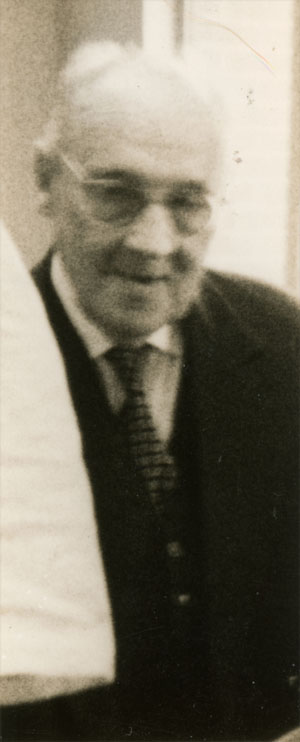
Halmos photographed Waclaw Sierpinski (1882-1969), of Sierpinski curve and carpet fame, in May of 1962 in Ann Arbor, Michigan. As noted above, Halmos was on the faculty at Michigan from 1961 to 1968. Born in Warsaw, Poland, then under Russian control, Sierpinski earned his undergraduate degree in mathematics and physics from the University of Warsaw in 1904. He earned his Ph.D. in 1906 from the Uniwersytet Jagiellonski (Jagiellonian University) in Krakow, Poland, and joined the faculty at the University of Lvov, Poland, in 1908. In 1909, after studying the work of Georg Cantor, he “gave the first ever lecture course devoted entirely to set theory” (O’Connor and Robertson, MacTutor Archive). He remained at Lvov until 1918, although from 1914 to 1918, he worked at the University of Moscow with Nikolai Luzin. This was because he and his family were stranded in Russia at the start of World War I, and apparently were not allowed to leave until the end of the war. Shortly after his return to Poland in 1918, Sierpinski moved to the University of Warsaw. In 1920, he founded the set theory journal Fundamenta Mathematicae, which he edited until his death. During the German occupation of Poland (1939-1945), he helped maintain the “underground university” in Warsaw. Sierpinski reported in 1945 that over half of Poland’s mathematicians had been killed during World War II. O’Connor and Robertson of the MacTutor Archive reported that Sierpinski published 724 papers and 50 books during his career. They summarized his contributions as follows:
Sierpinski’s most important work is in the area of set theory, point set topology and number theory. In set theory he made important contributions to the axiom of choice and to the continuum hypothesis.
(Sources: MacTutor Archive, Mathematics Genealogy Project)
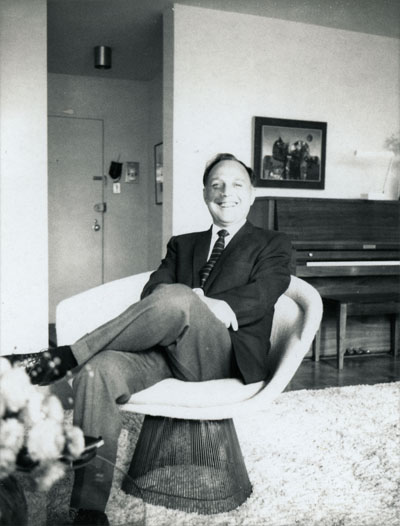
Isadore M. Singer was photographed by Halmos on May 21, 1968, in Chicago, Illinois. After earning a bachelors degree in physics from the University of Michigan in January of 1944 and spending three years in the Army Signal Corps, Singer earned his Ph.D. from the University of Chicago in 1950 with the dissertation, “Lie Algebras of Unbounded Operators,” written under advisor Irving Segal (whose photograph appears above). As noted above, Halmos was on the Chicago faculty from 1946 to 1961; he and “Iz” (or “Is”) Singer would have first met during Singer’s graduate school days there. Singer’s first academic post was a Moore instructorship at the Massachusetts Institute of Technology (MIT), where he has spent most of his career, save for two years at the University of California, Los Angeles (1952-1954), six years at the University of California, Berkeley (1977-1983), and various visiting professorships, including at the Institute for Advanced Study in Princeton, New Jersey, in 1955-56 and 1975-76. He is best known for his joint work with Michael Atiyah (who is pictured on page 2 and page 10 of this collection) on the Atiyah-Singer Index Theorem, but also for his work on analytic torsion with his MIT colleague Daniel B. Ray (see page 13 of this collection for a photo of Ray) and more generally for his efforts to unify mathematics and theoretical physics. As O’Connor and Robertson of the MacTutor Archive pointed out, Atiyah and Singer were awarded the 2004 Abel Prize for
their discovery and proof of the index theorem, bringing together topology, geometry and analysis, and their outstanding role in building new bridges between mathematics and theoretical physics.
Singer also is considered an excellent teacher at all levels, from first-year calculus to research seminars. He has advised at least 34 Ph.D. students, four of them at the University of California, Berkeley, and the rest at MIT. (Sources: MacTutor Archive, Mathematics Genealogy Project)
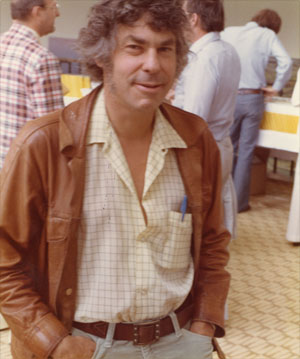
Halmos photographed Stephen Smale in August of 1975 at the Joint Summer Mathematics Meetings in Kalamazoo, Michigan. Another photo of Smale appears on page 40 of this collection, where you can read more about him.
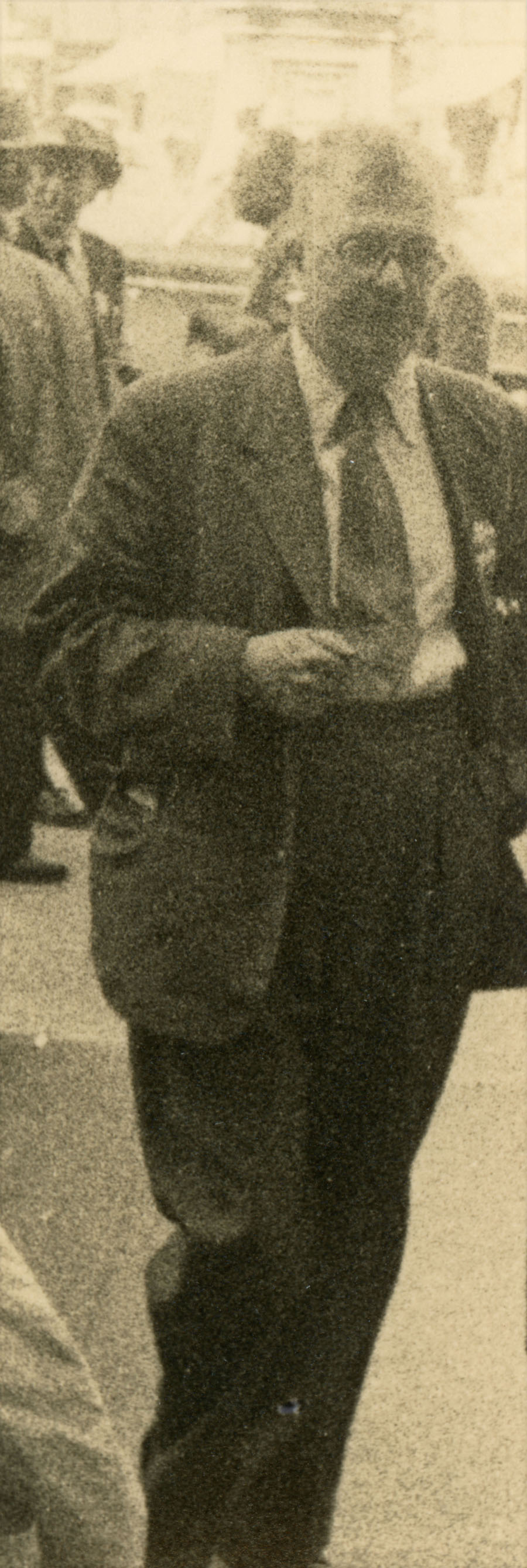
Halmos photographed Frank Smithies (1912-2002) in 1958 at the International Congress of Mathematicians held in Edinburgh, Scotland. Smithies earned his Ph.D. from Cambridge University in 1937 with the dissertation, “The Theory of Linear Integral Equations,” written under advisor G.H. Hardy. He spent his career at Cambridge, advising at least 26 Ph.D. students there. In his book, I Want to Be a Mathematician: An Automathography (Springer 1985), Halmos wrote fondly of the 1972 St. Andrews Colloquium (pp. 387-390), at which he gave a series of lectures, and, in particular, of Frank Smithies:
The people I spent the most time with were Frank and Nora Smithies. Frank could be called the father (grandfather?) of functional analysis in Britain. He spent the greater part of his life at Cambridge, and his students and his students’ students grew into many influential positions in the country. He is a wonderful man and always a pleasure to be with. He knows poetry and history and languages and, of course, mathematics; he has insight and wisdom and wit; he talks softly and precisely; he likes a glass or two of sherry before his dinner, and he smokes all the time (page 388).
See also the photo of Nora Smithies and William Hodge on page 24 of this collection. (Sources: MacTutor Archive, Mathematics Genealogy Project)
For an introduction to this article and to the Paul R. Halmos Photograph Collection, please see page 1. Watch for a new page featuring six new photographs each week during 2012.
Regarding sources for this page: Information for which a source is not given either appeared on the reverse side of the photograph or was obtained from various sources during 2011-12 by archivist Carol Mead of the Archives of American Mathematics, Dolph Briscoe Center for American History, University of Texas, Austin.
Janet Beery (University of Redlands) and Carol Mead (Archives of American Mathematics, University of Texas, Austin), "Who's That Mathematician? Paul R. Halmos Collection - Page 48," Convergence (June 2013), DOI:10.4169/loci003801




